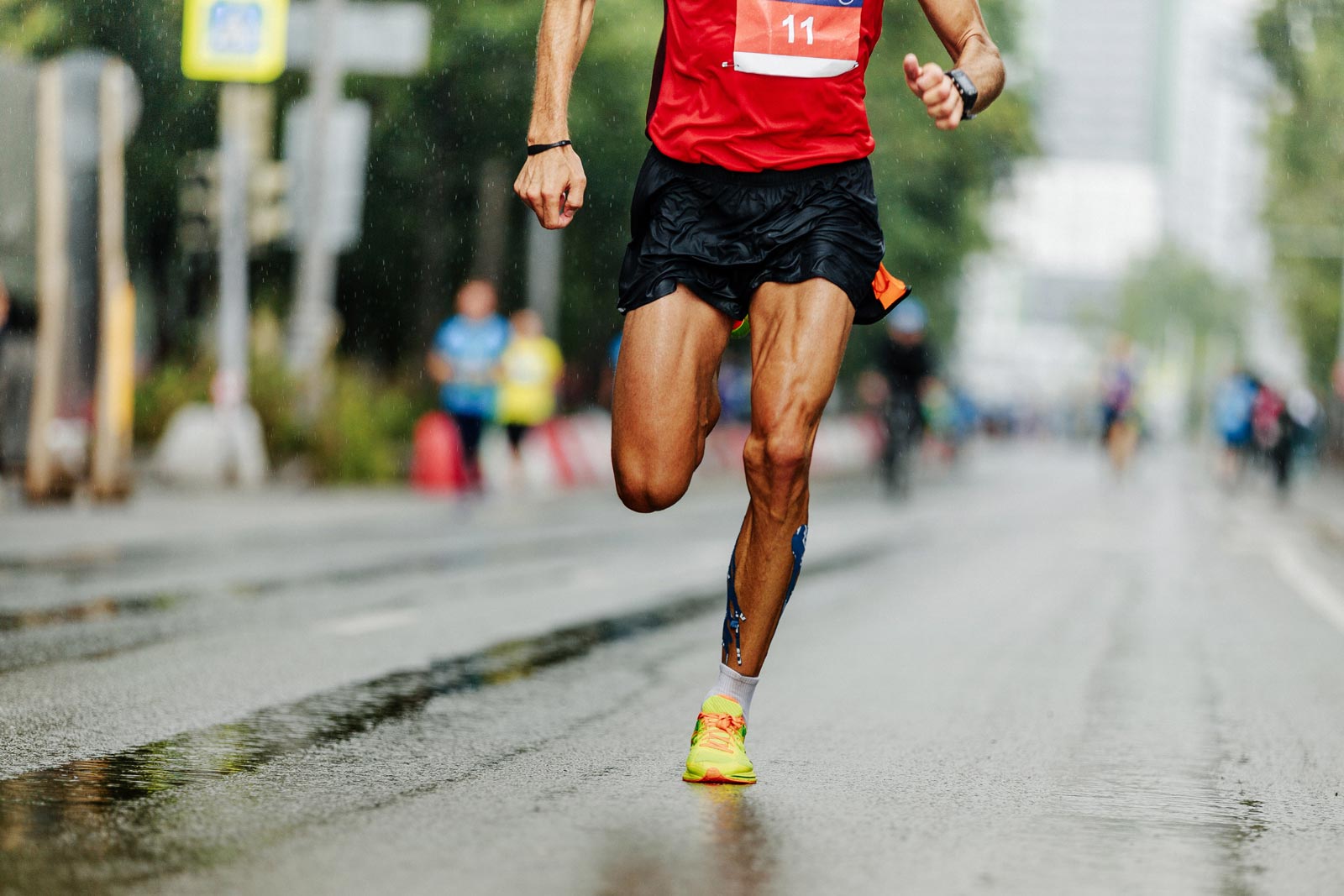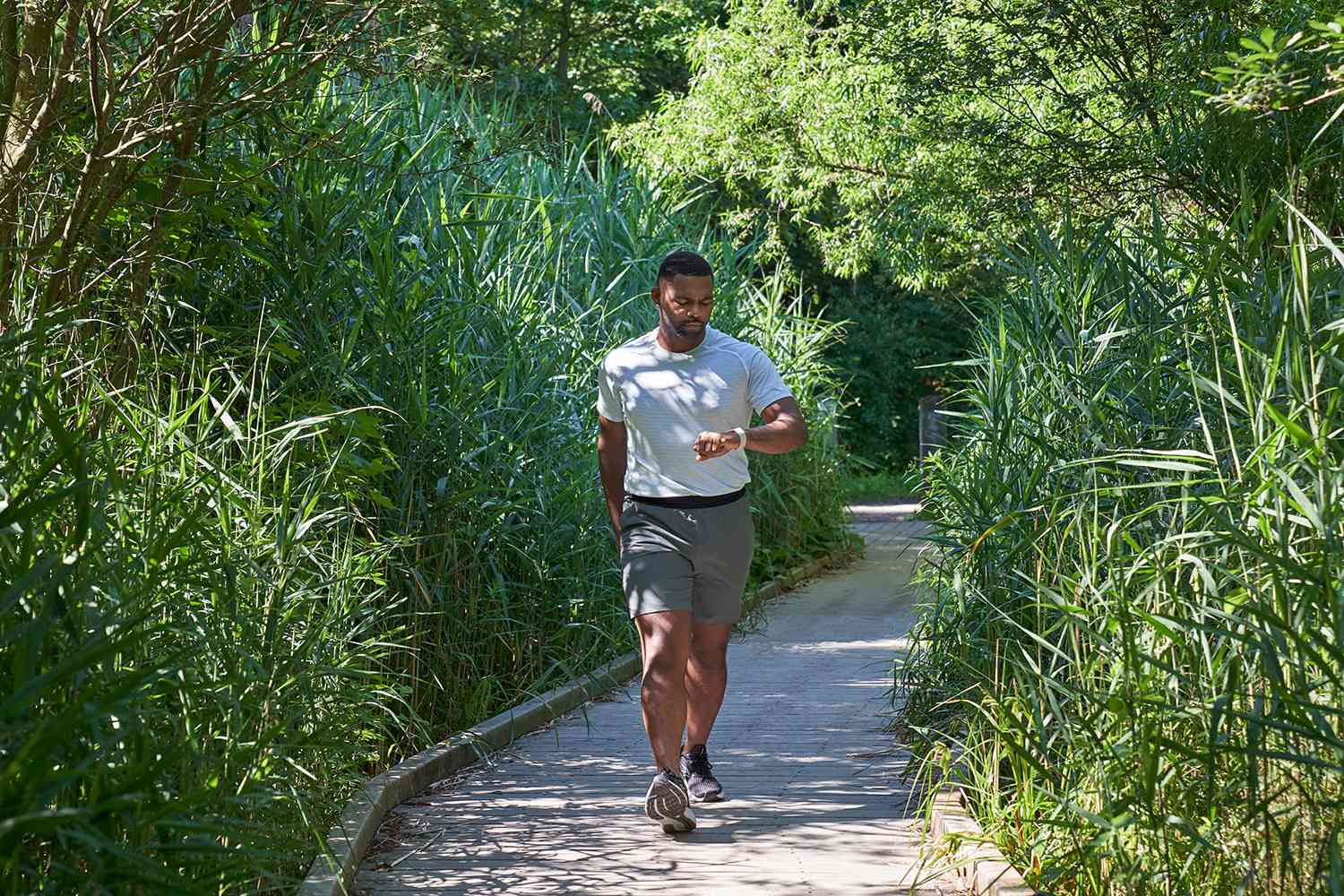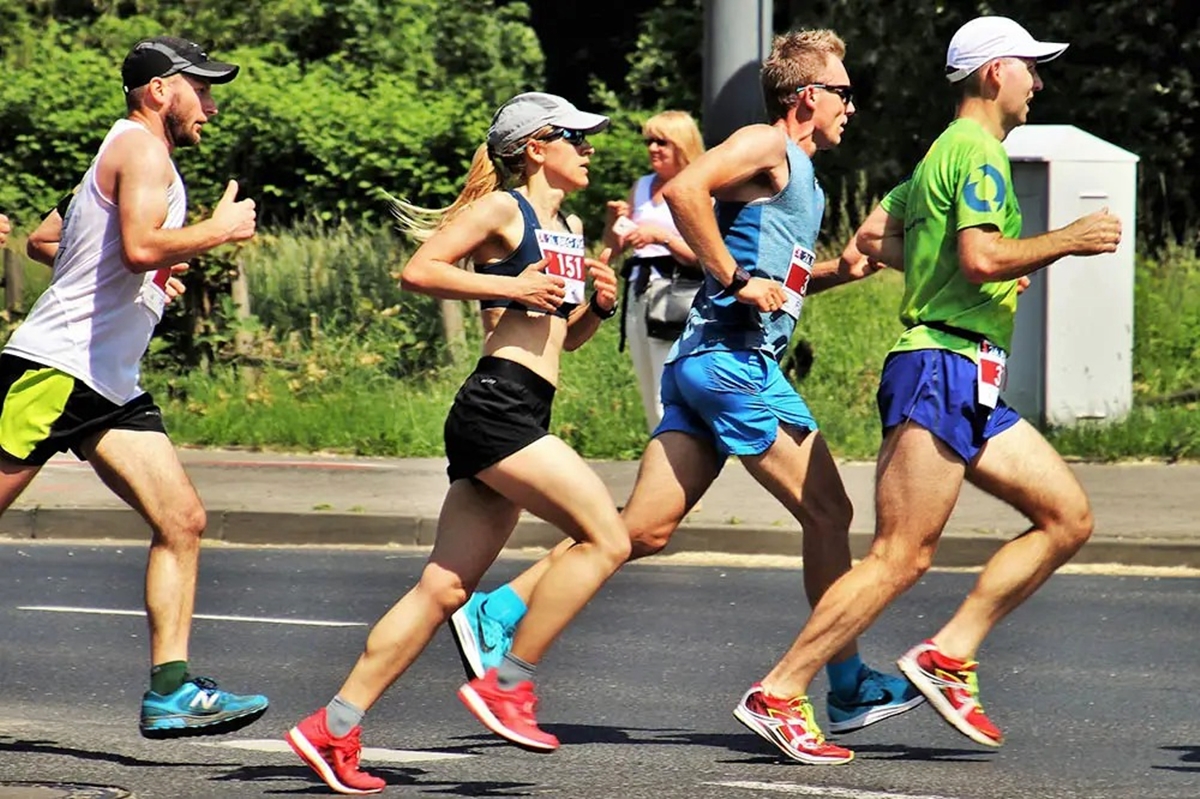

Featured
What Is Pace In Running
Modified: January 22, 2024
Discover what pace means in running and how it impacts your performance. Learn how to improve your featured pace for better results on the track.
Introduction
Welcome to the exciting world of running! Whether you are a seasoned marathoner or just starting out on your running journey, understanding the concept of pace is crucial for achieving your goals and improving your performance. Pace is a fundamental component of running, determining how fast or slow you move over a given distance. In this article, we will delve into the definition of pace, explore its importance in running, discuss the factors that affect it, and provide tips and strategies to help you enhance your running pace.
Running pace refers to the speed at which you cover a specific distance, typically measured in minutes per mile or minutes per kilometer. It is a key indicator of your overall running ability and plays a vital role in determining your race outcome. Pace is influenced by various factors, including your fitness level, terrain, weather conditions, and course elevation. Whether your goal is to complete a 5K race or conquer a marathon, understanding and effectively managing your pace is crucial for optimizing your performance and preventing burnout or injury.
Why is pace important in running? Well, it serves as a benchmark for gauging your progress and setting realistic goals. By knowing your pace, you can establish training targets, monitor your improvement, and adjust your efforts as needed. Pace also helps you understand and maintain the right intensity during workouts, ensuring that you are training at the appropriate level to elicit the desired adaptations in your body. It promotes efficient energy usage and allows you to make smart decisions during races, conserving energy for challenging sections of the course and strategically pushing your limits when needed.
Factors affecting pace range from intrinsic variables, such as your physiological capabilities and running experience, to external variables, such as weather conditions and terrain. Fitness level and running experience play a significant role in determining pace, with more experienced runners usually able to sustain a faster pace for longer periods. Terrain, such as hills or uneven surfaces, can significantly affect your pace, requiring adjustments to maintain a consistent effort. Additionally, external factors such as heat, humidity, and wind resistance can impact your pace, making it important to adapt your strategy accordingly.
Definition of Pace
Pace is a fundamental concept in the world of running. It refers to the speed at which a runner covers a specific distance, typically expressed in minutes per mile or minutes per kilometer. Pace is a crucial metric that helps runners measure their performance, set appropriate training goals, and strategize their race efforts.
When it comes to measuring pace, it is vital to distinguish between average pace and current pace. Average pace refers to the overall speed maintained throughout an entire run or race, while current pace refers to the speed at any given moment during a run. Both average pace and current pace can be valuable indicators of a runner’s fitness level and progress.
For example, if a runner completes a 5-mile run in 40 minutes, their average pace would be 8 minutes per mile. This means that, on average, they covered each mile in 8 minutes. However, their pace may vary throughout the run, with faster and slower periods depending on factors such as elevation changes or fatigue.
Pace can be measured in different units depending on the preference and location. In the United States, the most commonly used unit for measuring pace is minutes per mile (min/mi). In other parts of the world, minutes per kilometer (min/km) is the preferred unit. Regardless of the unit used, pace is a powerful tool that allows runners to compare performances, track progress, and make informed decisions about training and racing strategies.
Understanding and tracking your pace can help you set achievable goals. For example, if you are training for a half marathon and want to finish the race in under two hours, you can use your target pace to determine the speed you need to maintain. By monitoring your pace during training runs and adjusting your effort accordingly, you can work towards achieving your goal race pace.
Pace is a versatile measurement that can be applied to different distances and types of runs. It is not limited to long-distance running; even during short sprints or interval sessions, pace can be utilized to monitor speed and effort. By fine-tuning your understanding of pace, you can optimize your training and make improvements in your performance across various running disciplines.
Importance of Pace in Running
Pace plays a crucial role in running, impacting both your performance and overall running experience. Understanding the importance of pace and effectively managing it can help you achieve your running goals and maximize your potential. Here are some key reasons why pace is important in running:
1. Performance Measurement: Pace serves as a benchmark for measuring your performance. By monitoring your pace, you can track your progress over time and set realistic goals for improvement. Whether you aim to run a certain distance in a specific time or improve your personal best, pace provides a quantifiable measure of your running abilities.
2. Training Target: Pace helps you establish training targets during both easy runs and intense workouts. By knowing your target pace for each type of training run, you can train at the appropriate intensity to achieve your desired outcomes. Running at the right pace can optimize your training adaptations, prevent overtraining, and reduce the risk of injury.
3. Race Strategy: Pace is crucial in race strategy. Understanding your optimal race pace allows you to plan your effort throughout the event. By pacing yourself effectively, you can avoid starting too fast and burning out too soon or starting too slow and not reaching your full potential. A well-calculated race pace ensures a consistent effort and enables you to finish strong.
4. Energy Conservation: Maintaining a steady pace throughout a run helps conserve energy. By avoiding erratic speed fluctuations, you can improve your overall endurance and prevent early fatigue. Conserving energy becomes particularly important during longer distance races where maintaining an even and manageable pace can lead to better performance.
5. Injury Prevention: Running at an appropriate pace can reduce the risk of injury. Pushing yourself beyond your limits or running at a pace that is too fast for your current fitness level can put excessive strain on your muscles, joints, and connective tissues. By running at a pace that is suitable for your abilities, you can minimize the risk of overuse injuries and promote long-term running enjoyment.
6. Mental Focus: Pace provides a mental focus during runs and races. By setting a target pace, you can stay focused and motivated throughout your run. Breaking a run into smaller segments with specific pace goals can help you stay engaged and maintain a positive mindset, especially during challenging moments.
Understanding the importance of pace in running empowers you to set appropriate goals, train effectively, and race strategically. By paying attention to your pace and adjusting it as needed, you can optimize your performance, stay injury-free, and enjoy the journey of becoming a better runner.
Factors Affecting Pace
Several factors can influence a runner’s pace, determining how fast or slow they can cover a given distance. It is essential to consider these factors to better understand and manage your running pace. Here are some key factors that can affect your pace:
1. Fitness Level: Your overall fitness level plays a significant role in determining your pace. As your fitness improves, you will likely be able to sustain a faster pace for longer periods. Regular training, including both cardiovascular workouts and strength training, can help improve your endurance, speed, and running economy, all contributing to a faster pace.
2. Terrain: The terrain you run on can have a significant impact on your pace. Running on hilly or uneven surfaces requires more effort compared to running on flat terrain. Uphill sections can slow down your pace, while downhill stretches can naturally increase your speed. When planning your running routes, consider the terrain and its potential impact on your pace.
3. Weather Conditions: Weather conditions can affect your pace and running performance. Running in heat and humidity can increase your perceived effort, making it more challenging to maintain a fast pace. On the other hand, running in cooler temperatures can enhance your performance by keeping your body temperature regulated. Wind resistance can also play a role, with strong headwinds potentially slowing down your pace.
4. Course Elevation: Similar to terrain, the elevation of a racecourse or training route can impact your pace. Uphill sections require more effort, causing your pace to decrease. Downhill sections, on the other hand, can naturally increase your pace without exerting as much effort. Familiarizing yourself with the elevation profile of a course can help you plan your pace strategy accordingly.
5. Running Form: Your running form and technique can affect your pace. Efficient running form allows for smooth movement and better energy transfer, optimizing your pace. Proper body alignment, relaxed shoulders, quick turnover, and maintaining a moderate lean forward can all contribute to a more efficient running stride and potentially faster pace.
6. Mental Factors: Psychological factors can influence your pace. Your mindset, focus, and motivation levels can impact your perceived effort and ultimately your running pace. Positive self-talk, visualization techniques, and mental strategies can improve your mental resilience and help you maintain a consistent pace, especially during challenging moments.
7. Fatigue and Recovery: Fatigue levels and the amount of rest and recovery you have had can affect your running pace. Running while fatigued, either from previous workouts or insufficient rest, can slow down your pace. Adequate rest and recovery allow your body to repair and recharge, enabling you to perform at your best and maintain a faster pace.
By considering these factors and assessing their impact on your running pace, you can make adjustments and optimize your performance. Remember that pace can vary from day to day based on these factors, so it’s essential to listen to your body and adjust your pace accordingly during training and races.
How to Calculate and Monitor Pace
Calculating and monitoring your pace is essential for understanding your running performance and progress. By tracking your pace during training runs and races, you can make informed adjustments and set realistic goals. Here are some methods to calculate and monitor your running pace:
1. GPS Watches and Running Apps: Many runners use GPS watches or running apps on their smartphones to track their pace. These devices use satellite technology to provide real-time data on your speed, distance, and pace. They allow you to view your current pace and can also provide average pace for the entire run. GPS watches and running apps are convenient tools for monitoring your pace during training and races.
2. Manual Calculations: If you don’t have a GPS watch or running app, you can calculate your pace manually. To calculate your pace, divide the time it took you to complete a specific distance by that distance. For example, if you ran 5 kilometers in 30 minutes, your pace would be 6 minutes per kilometer. You can also convert your pace to minutes per mile if desired.
3. Split Timing: Split timing involves dividing your run into segments, usually marked at specific distances, and timing each segment individually. This allows you to monitor your pace at different points in your run, giving you insights into your pace variations. Split timing can be a useful strategy during race competitions or specific training sessions.
4. Running Track: If you have access to a standard running track, it provides a reliable way to measure and monitor your pace. Most tracks are 400 meters in length and have markings for each lap. By timing yourself during a set number of laps, you can easily calculate your pace per mile or kilometer.
5. Training Plans and Race Calculators: Many training plans and online resources provide pace calculators and guidelines to help you determine your target pace for different workouts and races. These calculators take into account your personal goals, running distances, and fitness level to recommend an optimal pace. Following a structured training plan can help you progress and improve your pace over time.
Monitoring your pace regularly is essential for understanding your running progress and making adjustments to your training. By comparing your pace over time, you can assess your improvement and set realistic goals. Additionally, tracking your pace during races allows you to gauge your effort and adjust your strategy to optimize performance.
Remember that pace is not fixed and can vary from day to day due to various factors. It’s important to listen to your body during runs and races and adjust your pace accordingly. Finding the right balance between pushing yourself and maintaining a sustainable pace will help you achieve your running goals while minimizing the risk of overexertion or injury.
Tips for Improving Running Pace
Improving your running pace can help you become a faster and more efficient runner. Whether you are aiming to achieve a new personal best or simply want to increase your speed and endurance, here are some valuable tips to help you improve your running pace:
1. Incorporate Speed Work: Including speed work in your training routine is essential for improving your running pace. Incorporate interval training, fartlek workouts, and tempo runs into your schedule to challenge your body and increase your speed. By alternating between periods of intense effort and recovery, you can improve your anaerobic capacity and enhance your overall running speed.
2. Build Endurance: Increasing your endurance is crucial for maintaining a faster pace over longer distances. Gradually extend the duration and distance of your easy runs to build your cardiovascular fitness and endurance. By improving your aerobic capacity, you will be able to sustain a faster pace for a longer period without feeling fatigued.
3. Strength Training: Incorporating strength training into your routine can significantly improve your running pace. Focus on exercises that target your lower body, core, and hips to build strength and improve your running form. Stronger muscles and enhanced stability can help maintain a faster pace and reduce the risk of fatigue-related form breakdown.
4. Improve Running Technique: Working on your running form and technique can contribute to a faster pace. Ensure proper posture, maintain a slight forward lean, and aim for a midfoot strike rather than heel striking. Utilize your arms for balance and power, and strive for a quick turnover of your legs. Improving your running technique can help you move more efficiently and reduce wasted energy.
5. Consistency and Progression: Consistent training and gradual progression are key to improving your running pace. Stick to a regular training schedule that includes a mix of easy runs, tempo runs, speed work, and long runs. Gradually increase your mileage and the intensity of your workouts over time to avoid overexertion and allow your body to adapt to the demands of faster running.
6. Take Rest and Recovery Seriously: Adequate rest and recovery are essential for improving your running pace. Make sure to include rest days in your training schedule to allow your body to repair and rebuild. Proper nutrition, hydration, and quality sleep also play a vital role in your overall recovery and performance.
7. Mental Training: Improving your running pace involves mental as well as physical training. Focus on developing mental toughness and maintaining a positive mindset during tough workouts and races. Utilize visualization techniques, positive self-talk, and goal-setting strategies to stay motivated and push through challenging moments.
8. Seek Professional Guidance: If you are serious about improving your running pace, consider working with a running coach or joining a local running group. They can provide expert guidance, personalized training plans, and valuable tips to help you reach your pace goals more efficiently.
Improving your running pace takes time, patience, and consistent effort. Remember to listen to your body, stay consistent with your training, and celebrate every small improvement along the way. By incorporating these tips into your training routine, you can work towards becoming a faster and more confident runner.
Pace Variations for Different Running Distances
Running pace varies depending on the distance you are running. While it’s important to have a general understanding of your average pace, it’s essential to recognize that different running distances require different pace strategies. Here are the pace variations you should consider for different running distances:
1. Sprint Distances (100m – 400m): Sprint distances require explosive speed and power. The pace for sprint distances is significantly faster compared to longer distances. Sprinters aim to achieve maximum acceleration and maintain an all-out effort throughout the race. The focus is on short bursts of speed.
2. Middle Distances (800m – 1500m): Middle distances require a combination of speed and endurance. The pace for middle distances is faster than longer distances but slower than sprint distances. Middle-distance runners aim to find a balance between maintaining a fast pace and conserving energy for a strong finish. Tactics such as differentiating between the first and second half of the race are crucial.
3. Long Distances (5K – Half Marathon): Long-distance races require sustainable speed and endurance. The pace for long distances is slower compared to sprint and middle distances but requires consistency over a longer period. The focus is on maintaining a steady and sustainable pace throughout the race while conserving energy for the later stages. Long-distance runners often employ negative splits, gradually increasing their pace as the race progresses.
4. Marathon and Ultra-Marathon Distances: Marathons and ultra-marathons require even pacing and endurance. The pace for these distances is slower compared to shorter races due to the extended duration. Runners aim to maintain a consistent pace without burning out too early. Proper race pacing, fueling, and hydration strategies are essential to successfully complete these challenging distances.
5. Trail and Obstacle Races: Trail races and obstacle courses involve varied terrain and additional challenges. The pace for these races is highly dependent on the course’s difficulty and obstacles. Runners need to adjust their pace based on the terrain, elevation changes, and obstacles encountered during the race.
It’s crucial to determine the appropriate pace for each running distance to optimize your performance. Practice running at specific paces during training to familiarize yourself with the desired effort level. This will help you develop a sense of pacing and allow you to adjust to different race scenarios.
Remember, pace is not always constant, and variations may be necessary based on factors such as weather conditions, terrain, personal fitness, and race goals. It’s essential to listen to your body, adjust your pace when needed, and maintain a balance between pushing yourself and running within your capabilities.
Pace Workouts and Training Plans
Integrating specific pace workouts into your training plan can have a significant impact on your running performance. By incorporating various pace workouts, you can improve your speed, endurance, and race performance. Here are some types of pace workouts and training plans to consider:
1. Interval Training: Interval training involves running repeated, shorter, intense efforts at a faster pace, followed by recovery periods. For example, you might run 400-meter repeats at a faster than race pace, with a recovery jog in between. Interval training helps improve your speed, anaerobic capacity, and running economy.
2. Tempo Runs: Tempo runs involve sustained efforts at a comfortably hard pace, slightly below your race pace. These workouts can vary in duration and intensity but usually involve maintaining a challenging pace for an extended period. Tempo runs improve your lactate threshold, enhance aerobic capacity, and condition your body to sustain a faster pace for longer distances.
3. Fartlek Runs: Fartlek, meaning “speed play” in Swedish, involves alternating between periods of fast running and periods of recovery. This workout is less structured than other pace workouts since it allows you to vary the duration and intensity of the faster segments. Fartlek runs simulate race-like conditions and improve your ability to change gears and adapt to different paces.
4. Hill Repeats: Hill repeats involve running uphill at a challenging pace, followed by a recovery jog or walk downhill. These workouts help improve leg strength, stride power, and overall fitness. Incorporating hill repeats into your training plan can enhance your uphill running ability and make you more resilient to changes in terrain during races.
5. Long Runs: Long runs are an essential component of endurance training. While the pace for long runs is generally slower than race pace, incorporating segments at goal race pace or slightly faster can be beneficial. These faster-paced segments help simulate race conditions, enhance mental and physical resilience, and prepare you for running at a sustained faster pace during longer races.
6. Race-Specific Workouts: Tailoring your training to mimic the conditions of your target race is crucial for optimal performance. This can include practicing race pace runs, such as running long segments of your race distance at goal pace. Race-specific workouts help you build confidence, familiarize yourself with pacing strategies, and mentally prepare for your upcoming race.
7. Periodized Training Plans: Following a well-structured, periodized training plan can help optimize your pace and overall performance. These plans gradually increase training volume and intensity throughout specific training phases, allowing for proper adaptation and recovery. Periodized training plans typically incorporate various pace workouts strategically placed throughout the training cycle to improve different aspects of your running pace.
It is important to note that pace workouts and training plans should be tailored to your current fitness level, running experience, and individual goals. Consulting with a running coach or utilizing online resources can help you design a personalized training plan that incorporates the appropriate pace workouts for your specific needs.
Remember, consistency, patience, and proper recovery are key when incorporating pace workouts into your training. By including a variety of pace workouts in your training plan, you can develop speed, endurance, and the ability to sustain a faster pace for longer periods, thus improving your overall running performance.
Understanding the Role of Pace in Race Strategy
Pace plays a crucial role in race strategy, influencing your overall performance and race outcome. Effective pacing is essential for optimizing your energy expenditure, preventing early burnout, and maintaining a strong finish. Here’s a closer look at the role of pace in race strategy:
1. Setting Realistic Goals: Understanding your pace capabilities allows you to set realistic race goals. By knowing your average pace in training and your fitness level, you can select a race pace that aligns with your abilities. This helps ensure that you’re not setting too ambitious or conservative goals, allowing you to maximize your performance on race day.
2. Starting Strong but Controlled: Starting a race at the right pace is crucial for a successful race strategy. Beginning too fast can lead to early exhaustion, while starting too slow may prevent you from capitalizing on your potential. By knowing your goal race pace and starting the race with a controlled effort, you can conserve energy for challenging sections later on.
3. Negative Splits: Negative splitting, where the second half of the race is faster than the first, is a popular race pacing strategy. It involves starting the race slightly conservatively and gradually increasing your pace as the race progresses. Negative splitting allows you to take advantage of built-up energy reserves and pass competitors who started too fast. This strategy is commonly used in longer endurance races, such as marathons or half marathons.
4. Consistent Pacing: Maintaining a steady pace throughout the race is crucial for optimal performance. Consistent pacing helps you avoid early fatigue and prevents unnecessary energy expenditure. By keeping an even effort, you can find a rhythm and maintain a sustainable pace, leading to a strong finish.
5. Adjusting to Course Conditions: Course conditions, such as elevation changes or varying terrain, can impact your race strategy. If you encounter hilly sections, you may need to adjust your pace accordingly. Slowing down slightly on uphills and speeding up on downhills can help you conserve energy and maintain a consistent overall pace.
6. Mental Focus and Confidence: Understanding your pace and race strategy can enhance your mental focus and confidence during a race. Having a clear plan enables you to stay focused on your goals, maintain self-belief, and push through challenging moments. Knowing that you are pacing well can provide a mental boost and help you stay motivated throughout the race.
7. Sprinting to the Finish Line: The final stretch of a race requires a surge of energy and speed. With proper pacing, you can conserve enough energy to sprint towards the finish line and give your best effort. By managing your pace throughout the race, you can maintain the ability to kick in that extra burst of speed when it matters most.
Understanding the role of pace in race strategy allows you to optimize your performance and achieve your race goals. Practice different pacing strategies during training to find the approach that works best for you and familiarize yourself with maintaining a consistent pace. Remember, race strategy is a combination of physical preparation, mental focus, and adaptability to course conditions, all centered around managing your pace effectively.
Conclusion
Pace is a fundamental component of running that significantly impacts your performance and overall running experience. It defines the speed at which you cover a specific distance and plays a crucial role in setting goals, training effectively, and strategically executing race plans.
Understanding the factors influencing pace, such as fitness level, terrain, weather conditions, and running form, allows you to make necessary adjustments to optimize your performance. Incorporating various pace workouts, such as interval training, tempo runs, and hill repeats, into your training plan helps develop speed, endurance, and the ability to sustain faster paces.
Race strategy heavily relies on pace, allowing you to set realistic goals, start races with controlled effort, and maintain consistency throughout the race. Strategies such as negative splits and adjusting to course conditions can help you make the most of your race day performance. Mental focus, confidence, and the ability to sprint towards the finish line add further complexity to race strategy.
To improve your running pace, it is crucial to follow a structured training plan, analyze and monitor your pace regularly, and listen to your body to avoid overexertion and prevent injuries. Remember that individual progress may vary, and patience and consistency are key factors in achieving your desired pace improvements.
So, lace up your running shoes, embrace the challenge, and strive to improve your running pace. Whether you are aiming to achieve a personal best, complete your first race, or simply enjoy the thrill of moving faster, understanding pace will undoubtedly enhance your running journey and unlock your potential.









